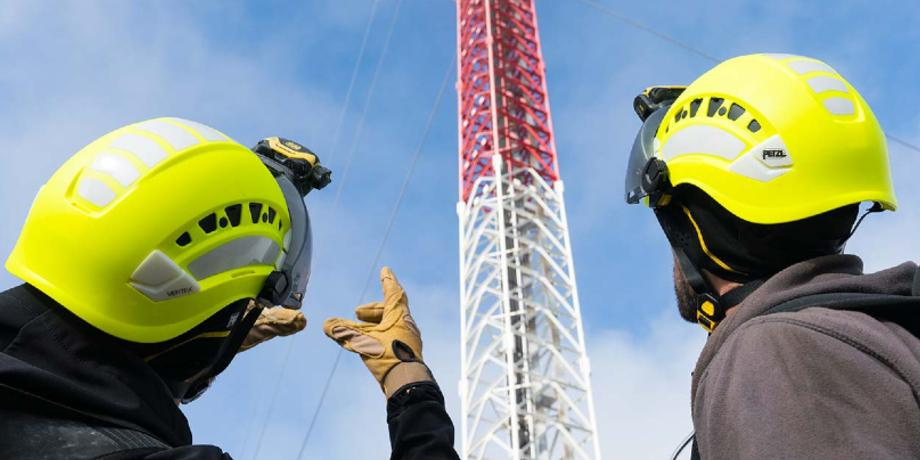
Helmet safety starts with using the right helmet. But not every helmet is right for height. Features that keep you safe on the ground, won’t do the job off it. Why? Because the moment your feet leave the floor, the risks change. And they vary – depending on what you’re doing.
That’s why it’s important to look above and beyond your standard-issue hard hat.
Standard Issue 1801’s – Not Right for Height
Most Australian worksites issue helmets that meet the Australian Standard for Occupational Protective Helmets (AS/NZS 1801 : 1997). This is a good start as 1801’s will protect your head from overhead impacts (ie falling objects). They also include a level of flame resistance.
However, the 1801 Standard is almost 25 years old. While it may address your primary head trauma risks at ground level – it will not address those of working at height (as you’ll see below). As a result, this Standard alone is not sufficient for helmet safety at height.
So if the standard-issue hard hat won’t cut it, what will?
Helmet Safety – Design Matters
The Three Critical Features of a Height-Safe Helmet
There are three critical features to look for in a height-safe helmet. Protection from overhead impacts, protection from multiple side impacts and a chinstrap that’ll keep your helmet on.
In an ideal world, all of these safety features would be included, tested and rated under a single Standard. To know that our helmet is height-safe, all we’d have to do is look for that Standard.
Instead, each safety feature is covered by multiple Standards (listed below) which test and rate to varying levels. All of which means you have to look closely to know how your helmet will perform.
Let’s go through each critical feature and their corresponding Standards below.
1. Must Be Rated for Crown Impacts
Protecting your head from overhead impacts remains vitally important. Equipment, tools, materials can still fall when you’re working at height. And you could be in the line of fire.
For example, you may be on the side of a building with people working above you. Or you’re an arborist or linesman and vulnerable to overhead hazards. Perhaps you’re working underneath a glass atrium – or in weather that could uplift fragile roofing.
That’s why you must ensure your helmet is rated for overhead or Crown Impacts. This is tested in two ways (rating levels vary per Standard).
- Firstly, hemispherical strikers are dropped onto the top of the helmet. This is to ensure the shell can withstand and absorb the maximum impact force covered by the Standard. And also to test that any load transferred to the wearer’s neck does not exceed set maximums.
- Secondly, conical strikers are dropped from varying heights onto the top of the helmet. This is to ensure the shell itself will not be penetrated by a sharp incoming object
Fortunately all of the helmet-relevant safety Standards below cover Crown Impacts:
| EN14052 : 2012 High Performance Industrial Helmets | EN12492 : 2012 Helmets for Mountaineers |
| Rated for up to 100J of impact energy to top of helmet Load transfer onto wearer’s neck does not exceed 5kN Penetration tested to 25J of impact energy at top of helmet | Rated for up to 100J of impact energy to top of helmet Load transfer onto wearer’s neck does not exceed 10kN Penetration tested to 30J of impact energy at top of helmet |
| EN397 : 2012 Industrial Helmets | AS/NZS 1801 : 1997 Occupational Protective Helmets |
| Rated for up to 49J of impact energy to top of helmet Load transfer onto wearer’s neck does not exceed 5kN Penetration tested to 30J of impact energy at top of helmet | Rated for up to 49J of impact energy to top of helmet Load transfer onto wearer’s neck does not exceed 5kN Penetration tested to 30J of impact energy at top of helmet |
2. Must Also Be Rated for Multiple Side Impacts
When working at height, hazards are likely closer to you and may not come from above.
And in the event of a fall – even with height safety equipment to arrest your fall – serious head trauma risks remain. You could hit or catch the edge of something on the way down. You may swing sideways (eg falling off a roof and swinging into the side of a building).
That’s why a height-safe helmet must also protect your from Multiple Side Impacts.
General industrial safety helmets offer some protection but have not been tested for this. Therefore, look to high performance industrial helmets and those made for mountaineers.
Both Standards test and rate impact and penetration protection at varying angles from the centreline of your helmet. (Note: Check penetration protection for helmets with vents.)
| EN 14052 : 2012 High Performance Industrial Helmets | EN 12492 : 2012 Helmets for Mountaineers |
| Rated to 50J of impact energy up to 60° from crown of helmet Penetration tested to 20J of impact energy at 2m from crown | Rated to 25J of impact energy up to 30° from crown of helmet Penetration tested to 30J of impact energy at 1m from crown |
| EN 397 : 2012 Industrial Helmets | AS/NZS 1801 : 1997 Occupational Protective Helmets |
| Not tested or rated | Not tested or rated |
3. Must Include a Secure Chinstrap
Given the potentially fatal risk, you need to know your helmet will stay on if you fall. Therefore, a chinstrap is an absolute must when working at height.
Furthermore, you need a chinstrap that has been stress-tested and will not release under pressure. That’s why your height-safe helmet must also include a Secure Chinstrap.
The most secure chinstraps are found on Mountaineering Helmets. They’re called non-releasing chinstraps because they’ll withstand a 500N (~50kg) force before releasing. In other words – in a big fall, your helmet stays on.
Both high performance and standard industrial helmets also require a secure chinstrap. However, they’re secure to a lower force – up to 150N (~15kg) – and must release before 250N (~25kg). This releasing-type chinstrap is more suitable for work on or closer to the ground where fall distance is reduced. The lower release load is designed to prevent any strangulation hazard if the helmet becomes snagged.
| EN 14052 : 2012 High Performance Industrial Helmets | EN 12492 : 2012 Helmets for Mountaineers |
| Chinstrap secure up to a force of 150N (~15kg) Chinstrap must release before force reaches 250N (~25kg) | Chinstrap secure up to a force of 500N (~50kg) Chinstrap must release when force above 500N (~50kg) |
| EN 397 : 2012 Industrial Helmets | AS/NZS 1801 : 1997 Occupational Protective Helmets |
| Chinstrap secure up to a force of 150N (~15kg) Chinstrap must release before force reaches 250N (~25kg) | Chinstrap optional |
Helmet Safety – Is it Fit-for-Purpose?
So you’ve found a helmet that covers your head risks at height. But does it also suit your work?
Let’s take a helmet rated only to the Standard for Mountaineers (EN 12492). It may be alright for height – but not suitable for industrial applications. Not unless it also meets the basic electrical insulation requirements of Standard EN 397 or EN 14052. Why? Because both of these standards apply to industrial (vs climbing) helmets. And as such they test for flame resistance.
Now let’s say you’re in Electrical Utilities and work-at-height in proximity to electrical installations. In this environment, you’ll need electrical protection beyond the Standards for industrial helmets. As a result, your helmet must also meet Standard EN 50365. This Standard covers the insulation of helmets where there’s potential for contact with low voltage electrical installations.
As the above illustrates, it’s really important to do a thorough risk assessment. You need to know your helmet covers all of your risks – not just some of them.
Helmet Options – Start Here
If you take one thing away today, it should be to have another look at the helmet you’re using. If all your risks aren’t covered or your needs have changed – you need a different helmet.
And should you need a new helmet, we have some world class options to choose from:
| Petzl Vertex | Petzl Vertex Vent |
 | 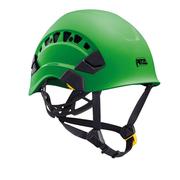 |
| Skylotec Inceptor GRX Vented | Skylotec Inceptor GRX High Voltage |
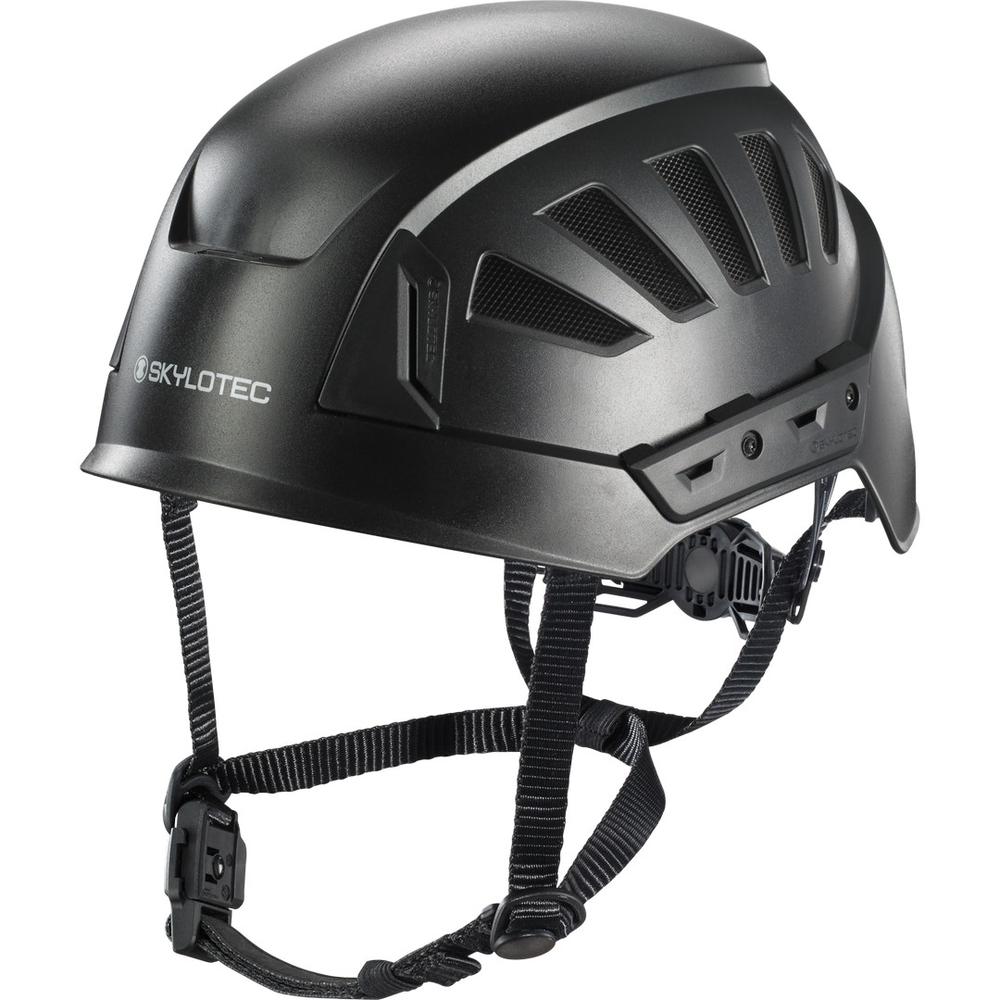 | 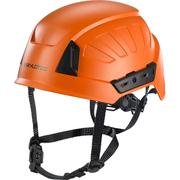 |
| Kask HP Plus | Kask Zenith |
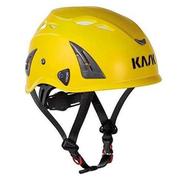 | 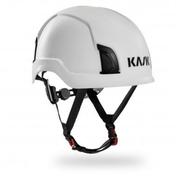 |
Helmet Confusion – Need Help?
We know that the myriad of safety Standards can be confusing. So if you need help finding the right height-safe helmet for you – give us a call. We have 20 years of experience helping people like you get the best-fit and best-performing helmet for their needs.
